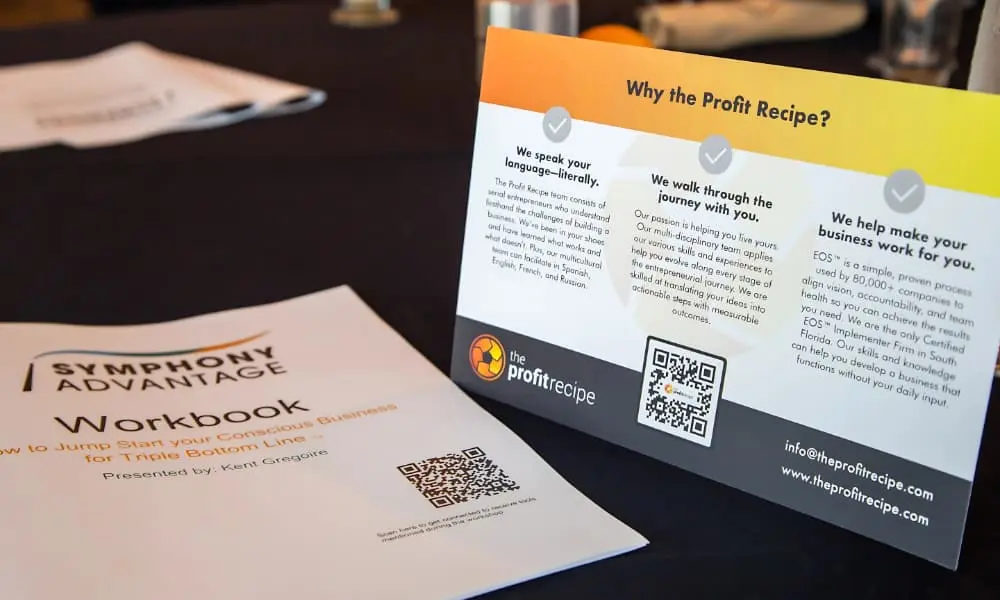Adopting the Lessons of Quantum Physics To Thrive in a Dynamic Business Environment
Key Takeaways:
- The shortest distance to your goals is not a straight line
- When our minds open and become agile and flexible, the possibilities are endless
- We have to celebrate uncertainty and explore options objectively
- Everything is interconnected, some things are contradictory, and only by exploring different points of view can we break barriers with creative solutions.
The world and our actions in it are not linear, although our thought processes usually are. In business and life, we think in straight lines. It’s easy. It also causes trouble because we apply linear thinking to relationships that are not. Sometimes, the shortest distance is not always a straight line between two points.
In this modern world, a traditional linear approach may not get us where we want to go in the face of uncertainty and complexity. The business environment is dynamic, and success means embracing a new idea: quantum planning, which involves quantum thinking. Work and business have changed, requiring ingenuity and creativity.
We can take inspiration from the principles of quantum physics to create a culture of organizational innovation. While it may sound crazy, business has learned a lot from science, applying the scientific method – observing, forming a hypothesis, predicting how things will turn out, conducting experiments, and analyzing results.
Let’s look at the foundations of quantum planning, its core elements, what it looks like in action, its benefits, some things to watch out for, and how we can implement it to increase agility and be ready for whatever comes next.
The foundation of quantum planning
In physics and the business world, we can see conflict in different ways, and in these cases, we can’t apply linear, straight-line thinking. We have to be flexible and creative.
When we embrace and integrate ways of looking at ideas or concepts that don’t agree with each other, we can appreciate, rather than dislike, how complex business is. This means being open-minded enough to explore opposing points of view to find creative solutions that go beyond how we usually think.
The core elements of quantum planning
Simultaneously considering multiple strategies allows us to explore various approaches and possibilities. This approach enhances our flexibility and adaptability, enabling us to better cope with uncertainties and change.
And when we practice quantum collaboration, we create a culture of interconnected teams and individuals to create synergy – having an effect that is greater than the sum of its parts and collective success. By breaking down silos and encouraging collaboration and knowledge sharing, everyone will recognize that every department, every person, is interconnected.
We know, of course, that getting people from different departments to work together can be difficult. It’s human nature to resist change, have different priorities, or use different communication styles. In these instances, it’s important to establish channels for open communication and address the issues head-on. The idea of quantum coherence can be metaphorically applied to these situations. In this concept, quantum particles, or bits, maintain a consistent and well-defined relationship with each other, enabling unique capabilities. Similarly, if two departments maintain a strong, consistent, and harmonious connection with each other, even when faced with challenges or uncertainties, positive outcomes and the attainment of goals will be realized.
Quantum planning in action
To unlock the potential of quantum planning, we have to have a mindset that doesn’t just accept new processes – we must celebrate uncertainty, encourage collaboration, and constantly look for and explore new opportunities and possibilities. Here are several approaches:
- Use decision trees to analyze choices, risks, objectives, and what you’ll gain. It’s like a map of possible outcomes to weigh potential actions against each other.
It starts with a single node that branches into any number of possible outcomes, which branch into other possibilities to form a tree-like shape. The three different types of nodes are chance, decision, and end. Chance shows the probabilities of a result, the decision node indicates the decision that needs to be made, and the end node shows where you’ll end up if you take any one path.
- Try a Monte Carlo simulation. Random variables make predicting results difficult, and the Monte Carlo simulation can help us understand the impact. Set down how you currently do things and identify areas for improvement. In the process, you’ll gain valuable insights that help you make better decisions.
- Apply game theory. Market leadership and dominance depend navigating competitive and cooperative scenarios. As entrepreneurs, we can make decisions and focus on how best to get that competitive edge.
- Beware the black swan. Black swan theory, or black swan events, describes events that are almost impossible to predict. Because they can’t be predicted or modeled, there’s no preparing for them. Coping with them means learning how to be agile and flexible.
The benefits of quantum planning
Quantum planning takes us to a place of challenging barriers and limitations and innovating past them. This is done by continuously exploring breakthrough ideas.
By creating an environment that encourages risk-taking, bold idea exploration, and creative problem-solving we reach a place of limitless innovation. This can lead to a reimagined business by design, leading to new levels of growth.
However, just like in everything we do, there can be biases, and quantum thinking demands considering and adopting thoughts and ideas that we don’t necessarily agree with. We must pursue the truth objectively to make more rational and data-driven decisions.
Implementing quantum planning
Creating a quantum business requires:
- Seeing our business as a living system defined by its relationships with all other elements, with an infrastructure and culture that builds relationships between them.
- Flexibility and responsiveness to adapt to complexity and rapid change continuously.
- A bottom-up approach that empowers employees to make decisions. Encourage them to consider their jobs something that can be reinvented.
- Quantum planning involves considering the diversity of opinions, problem-solving styles, experience, and education available within your organization.
- Experimentation, exploration, and creativity, so lead by example.
Your quantum organization begins with a sense of purpose, a vision, and values.
Risks of Quantum Planning
You’ve heard the saying, “Too many cooks spoil the broth.” With the many options presented when we embrace a quantum mindset, there can be the issue of choosing the best path forward, and we can become paralyzed.
The solution is to set specific criteria that each option must meet. This means we can evaluate each one against that criteria to make objective apples-to-apples decisions.
The world is dynamic, and so must we be. Quantum Planning opens a new world filled with patterns and connections below the surface that drive business. Understanding the interrelationships between variables allows us to identify new opportunities, assess their risks, and make better-informed decisions. Navigating this complex and uncertain world takes agility, flexibility, and open-mindedness, and quantum planning helps us rise to the challenge.
Take the quantum leap.
At The Profit Recipe, we’re a group of flexible, agile, open-minded entrepreneurs just like you. We’ll work with you to understand and develop the leadership skills you need for success. We’ve been there, done that, and learned valuable lessons along the way that we’re eager to share. Join our entrepreneurial community and share your experiences to help yourself and others navigate the leadership journey.
We’re here for you and because of you. Let us support your entrepreneurial journey – schedule a call with one of our experts today or send us a message.



